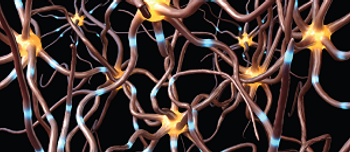
Practitioners have known for almost 2 decades that oral contraceptives consistently and substantially reduce the serum concentrations of lamotrigine and may reduce seizure control.

Practitioners have known for almost 2 decades that oral contraceptives consistently and substantially reduce the serum concentrations of lamotrigine and may reduce seizure control.

The combined use of valproic acid and a carbapenem is likely to occur in patients with central nervous system infections resulting from head trauma or surgical procedures; serious systemic infections, including pneumonia; and generalized seizure disorders.

The antibacterial agent linezolid is a nonselective inhibitor of monoamine oxidase (MAO), and when it is combined with serotonergic agents, it has been associated with serotonin syndrome. A recent case of serotonin syndrome was reported with concur- rent use of linezolid and methadone.


Endothelin antagonists—ambrisentan (Letairis), bosentan (Tracleer), and macitentan (Opsumit)—are indicated to treat pulmonary arterial hypertension. Although these drugs have similar pharmacologic activity, they differ in their potential for their plasma concentrations to be altered by other medications.

Isolated cases of serotonin syndrome have been reported in patients using triptans and SNRIs or SSRIs.

Eliglustat, an inhibitor of glucosylceramide synthase, is a first-line treatment for adults with type 1 Gaucher disease.

Ticagrelor is an orally administered drug that is a direct-acting antagonist of the P2Y12 receptor resulting in reduced platelet aggregation.

Assessing the clinical importance of drug–drug interactions involving herbal medications can be problematic.

In addition to their anti-inflammatory and analgesic activity, NSAIDs that inhibit cyclooxygenase-1 reversibly inhibit platelet aggregation and reduce the ability of the stomach lining to prevent ulceration.

Drug–drug interactions usually occur when the drug that causes the interaction, called the precipitant or perpetrator, affects another drug, called the object or victim.

The FDA recently approved betrixaban (Bevyxxa) as an oral anticoagulant (direct inhibitor of factor Xa).

The debate about the extent to which CYP2D6 activity affects tamoxifen efficacy in patients with breast cancer continues.

Many drug interaction databases include oral potassium supplements and drugs with anticholinergic activity as a serious interaction.

Piperine is a major alkaloid found in black pepper (piper nigrum), and the alkaloid is used as an herbal product for its purported anti-inflammatory, antioxidant, and antitumor properties.

As direct-acting oral anticoagulants (doacs) have become increasingly popular, instances of drug interactions in patients have begun to appear in the literature.

In 1989, researchers doing a study designed to assess a drug interaction between ethanol and felodipine accidentally discovered that grapefruit juice substantially increased felodipine plasma concentrations.

Metformin has been a first-line oral treatment for patients with type 2 diabetes for 20-plus years.

Adverse outcomes due to drug–drug interactions often occur after the addition of a new drug that increases or decreases the effect of a drug a patient is already taking.

Many potential drug interactions are based on a precipitant drug that inhibits the metabolism of the object drug.

Over the past several years, many publications in the medical literature and the lay press have lamented the large percentage of study results that cannot be replicated in subsequent studies.

The potential interaction between levothyroxine and warfarin is responsible for many alerts in computerized drug interaction screening programs.

Many drugs are used for various indications, and a certain indication may need to be considered when drug interactions are evaluated.

Loperamide has been available over the counter for treating diarrhea for many years.

In the official prescribing information of pharmaceutical products, drug interactions are often listed in 2 categories: contraindicated" and avoid concomitant use." Is this a distinction without a difference?

We have often described drug-drug interactions that are caused by the precipitant drug inhibiting the CYP450 enzyme responsible for the metabolism of the object drug.

In 1991, the first Beers Criteria" were published to alert clinicians to drugs that are potentially inappropriate for use in older adults.

Tendinopathy has been recognized as an uncommon, but potentially disabling, adverse effect of fluoroquinolones.

Hyperkalemia can be a persistent problem for a variety of patients, such as those with chronic kidney disease, diabetes, or heart failure.

If the assumption is correct that warfarin and sulfonylureas are competing for the same binding sites, the order of drug administration might be an important factor determining the potential outcome.

Published: April 18th 2013 | Updated:

Published: May 17th 2013 | Updated:

Published: June 18th 2013 | Updated:

Published: July 19th 2013 | Updated:

Published: July 11th 2011 | Updated:

Published: September 11th 2013 | Updated: